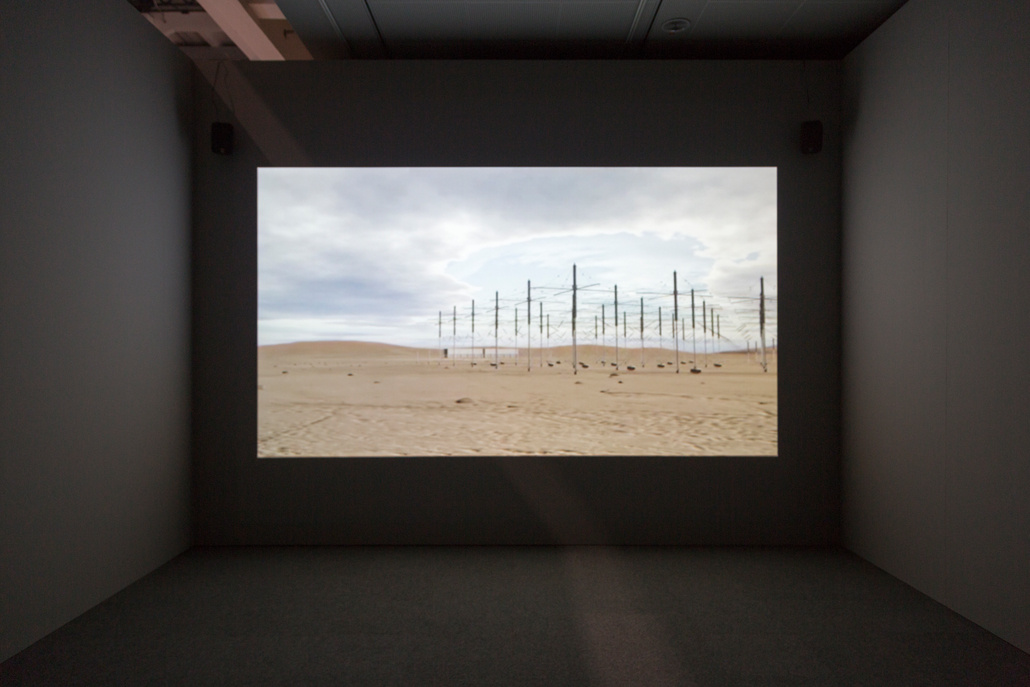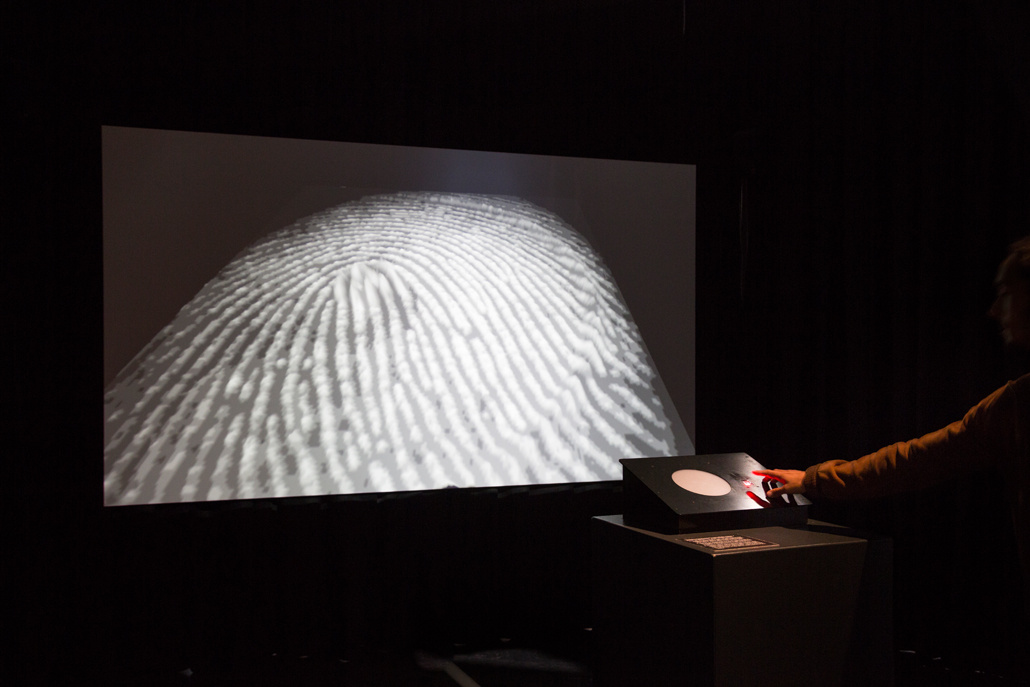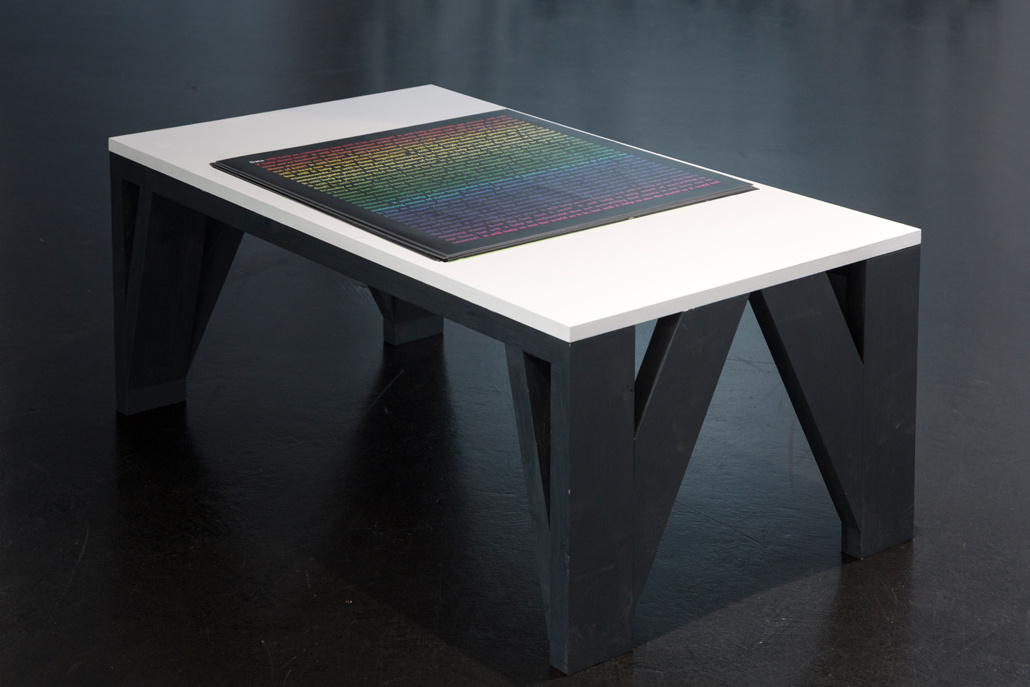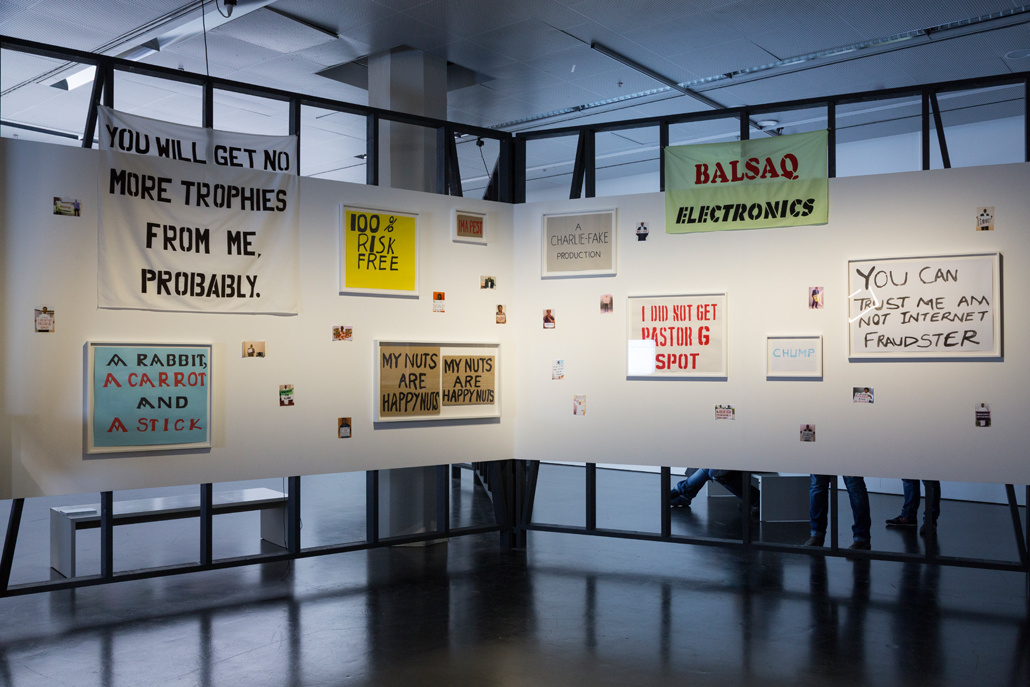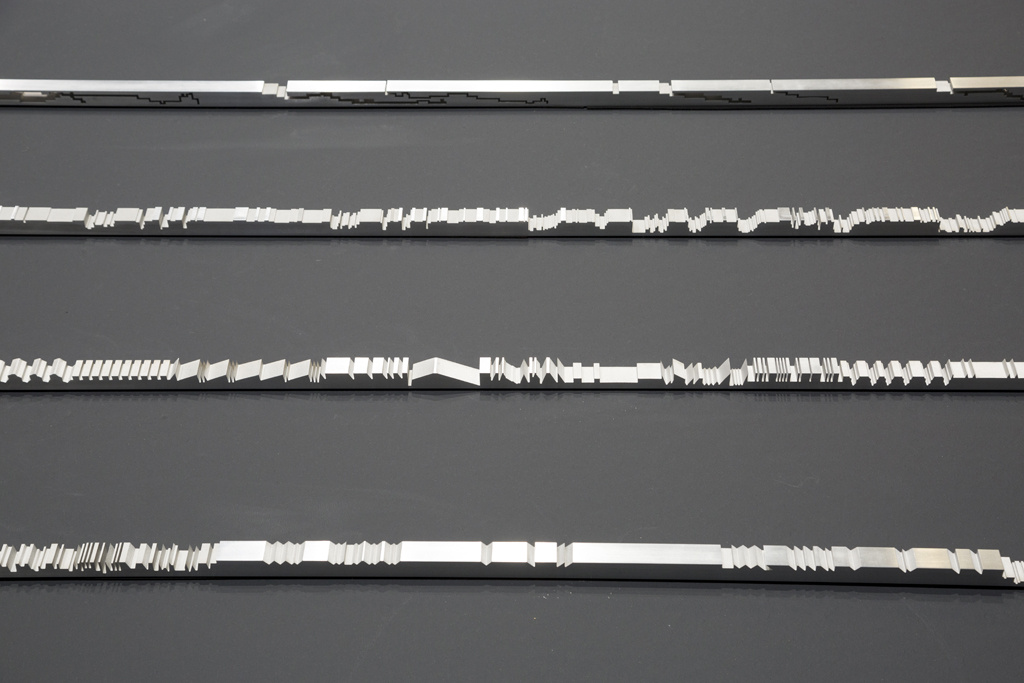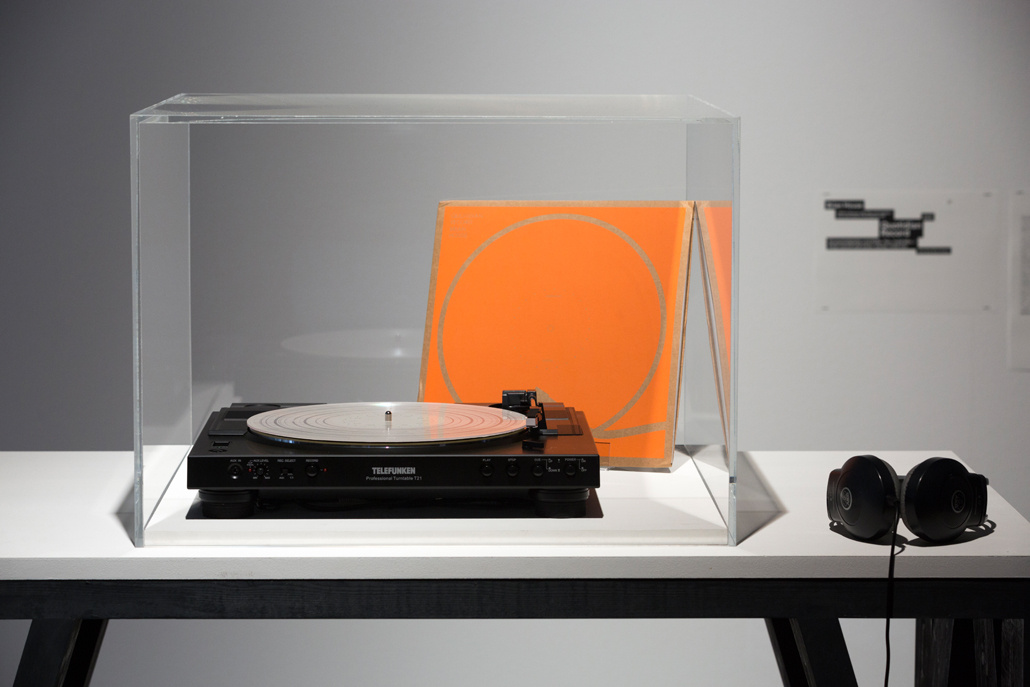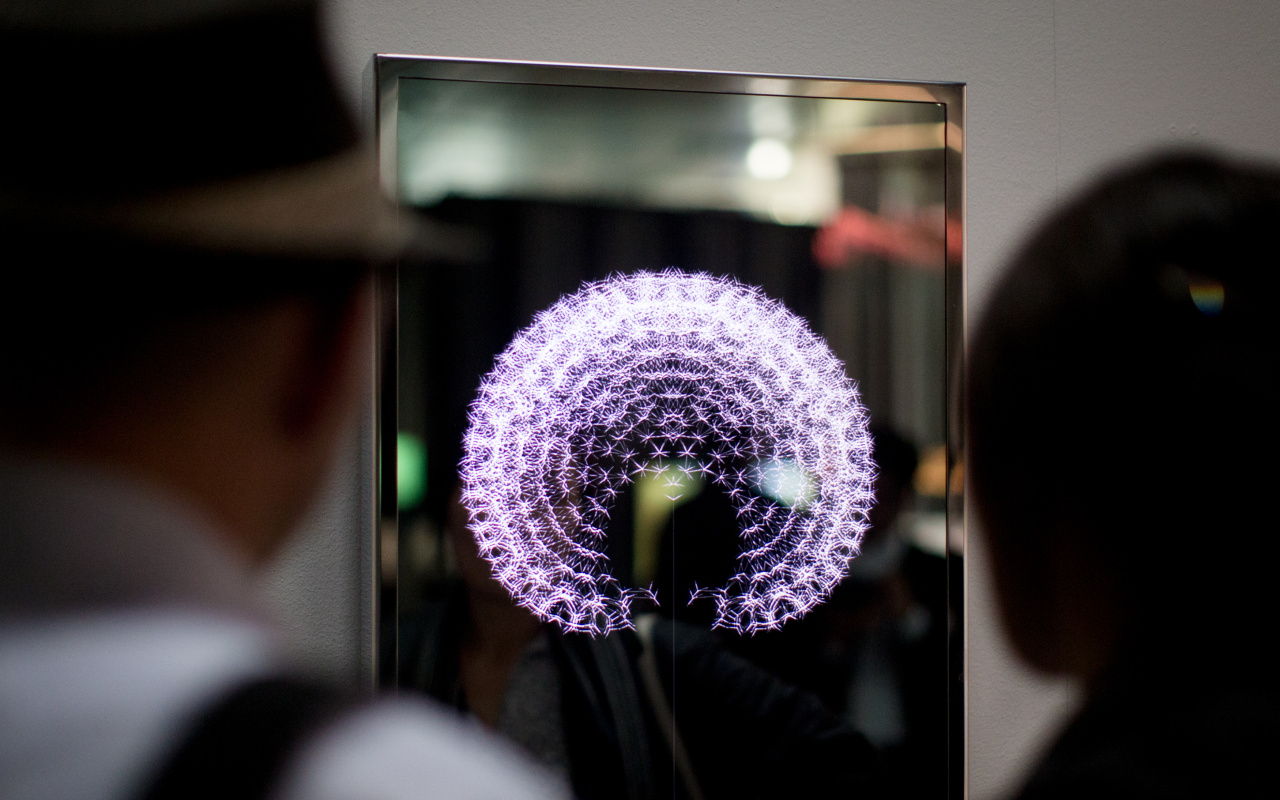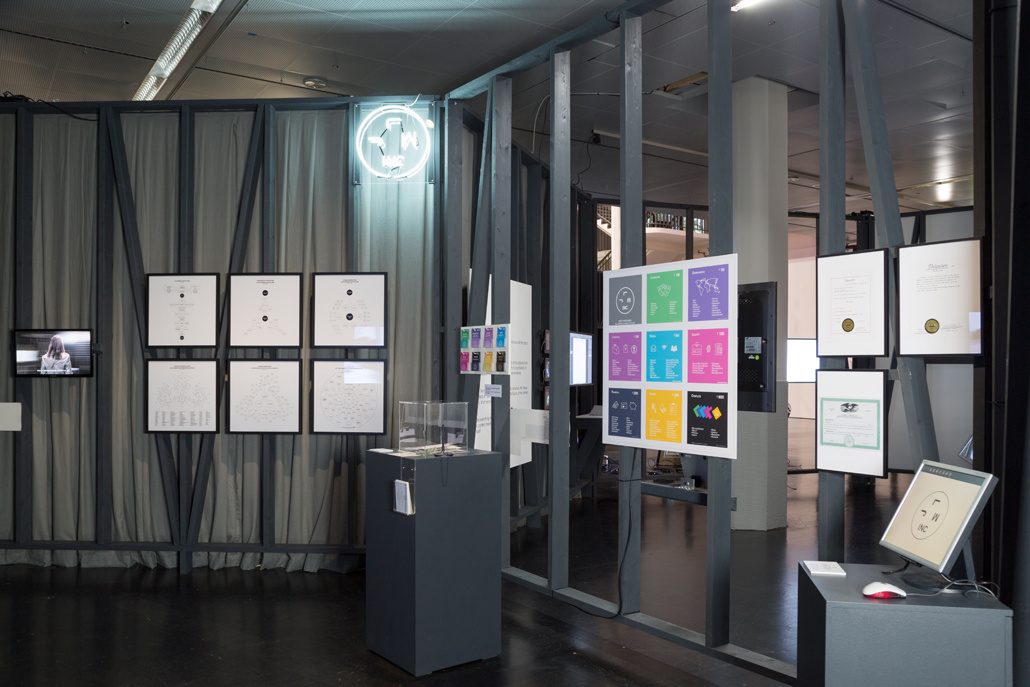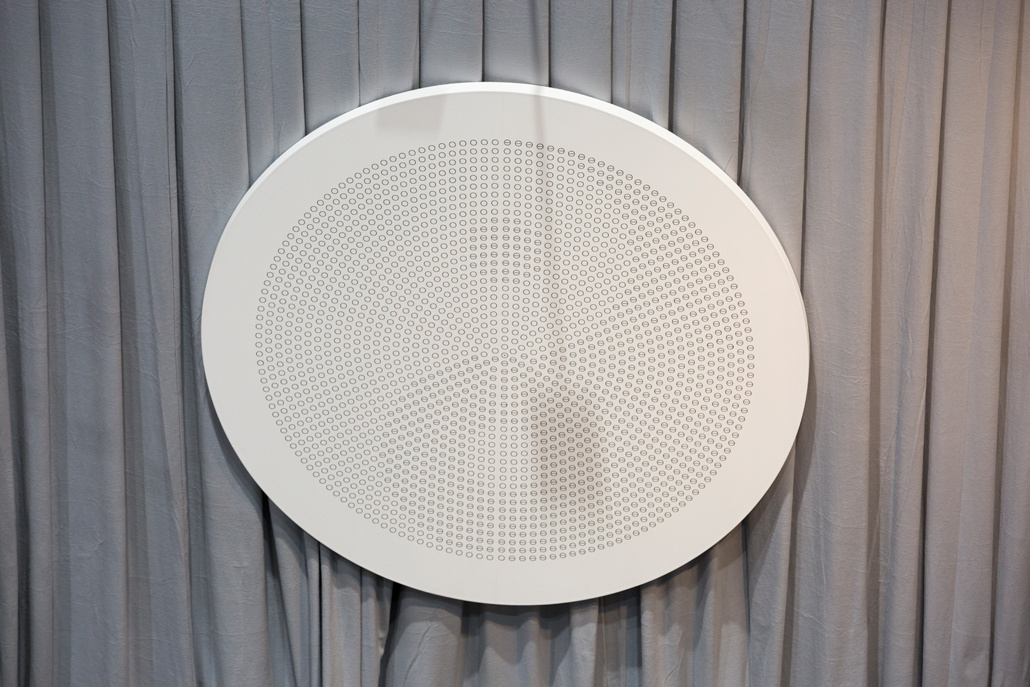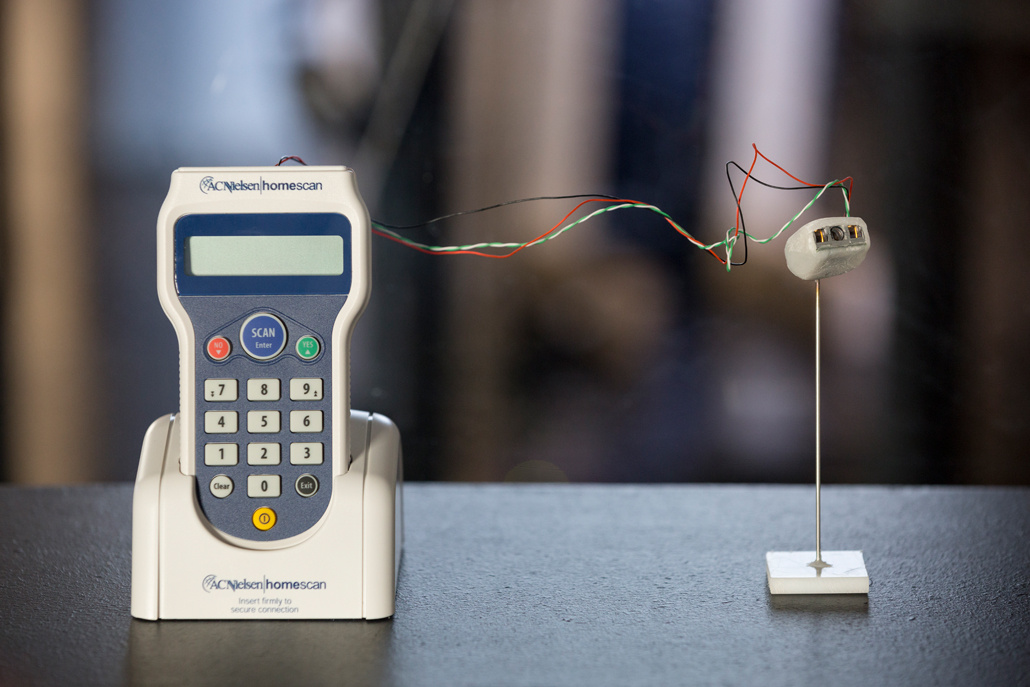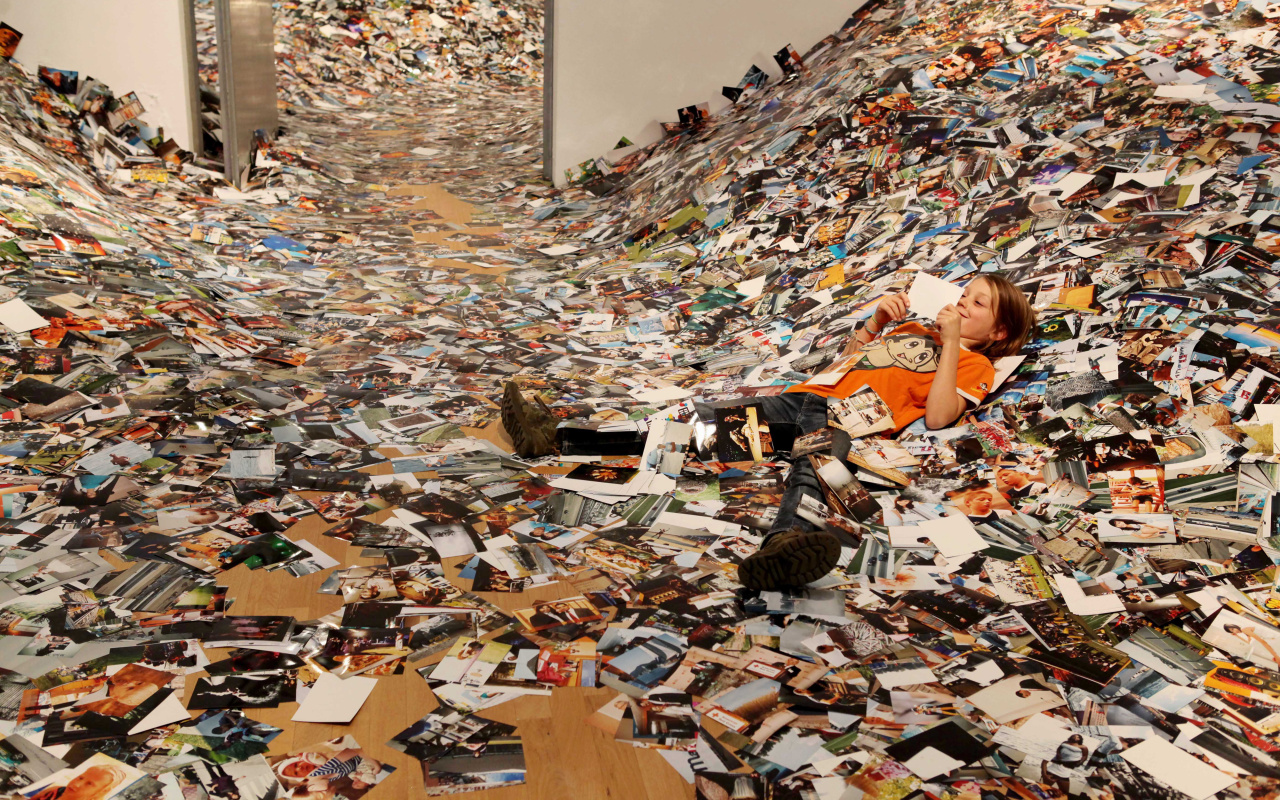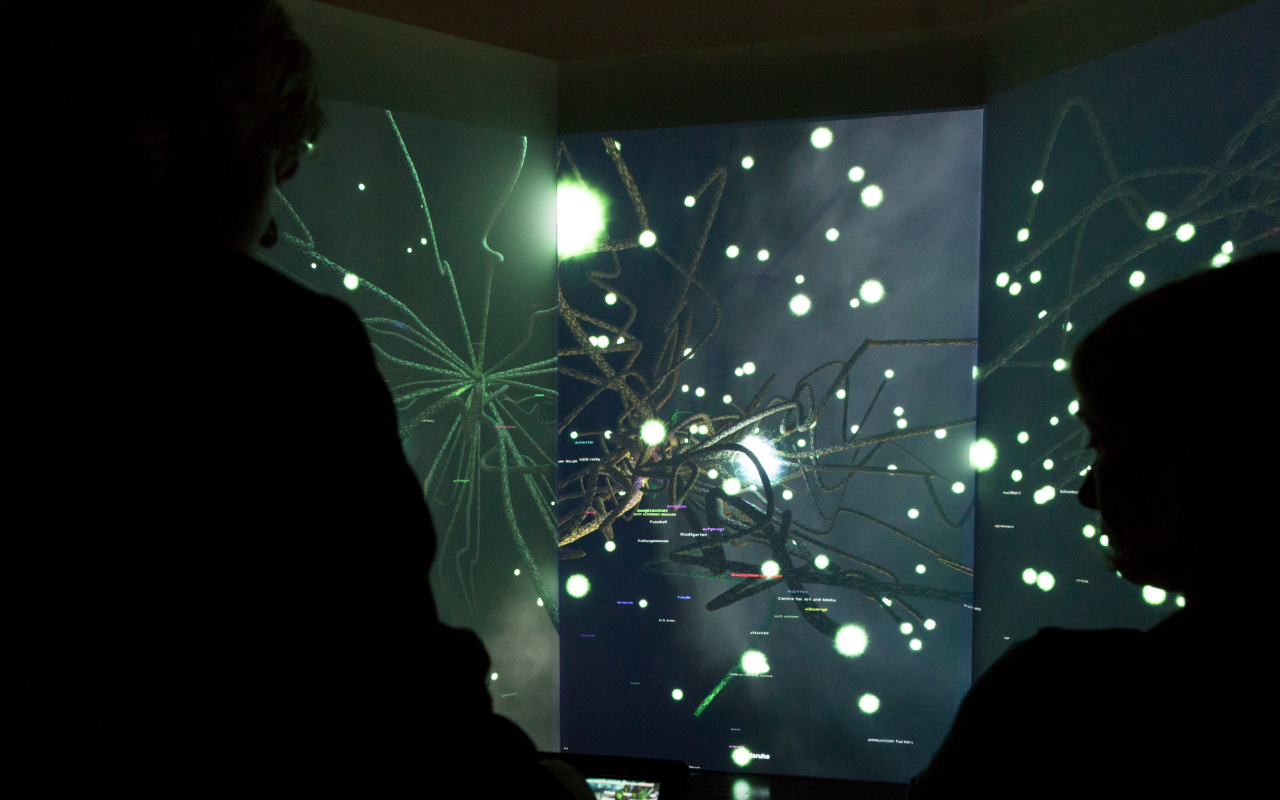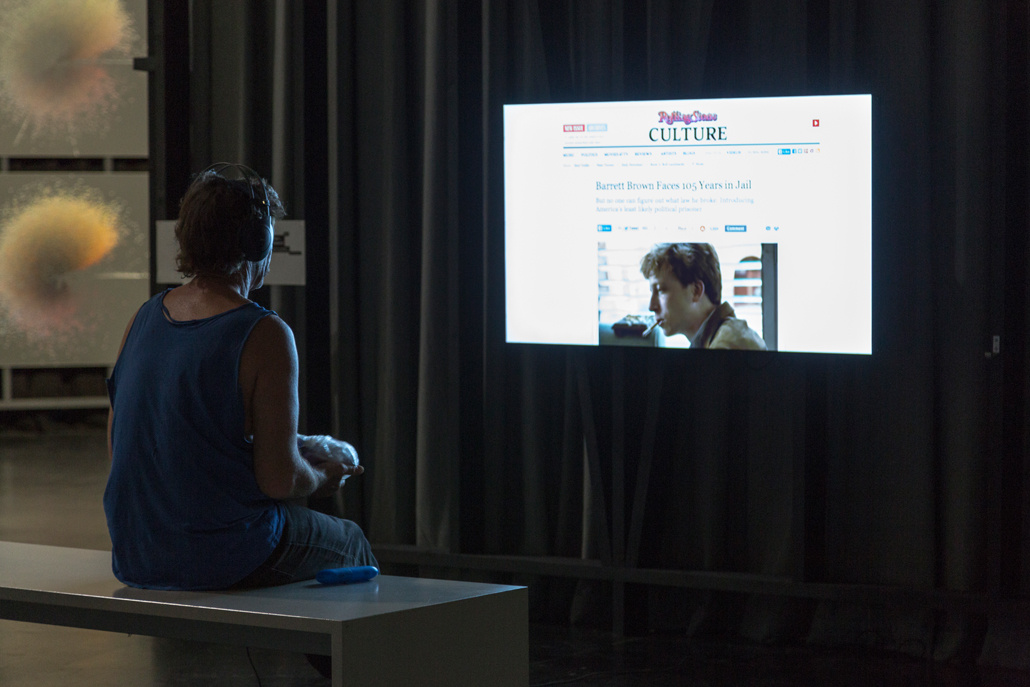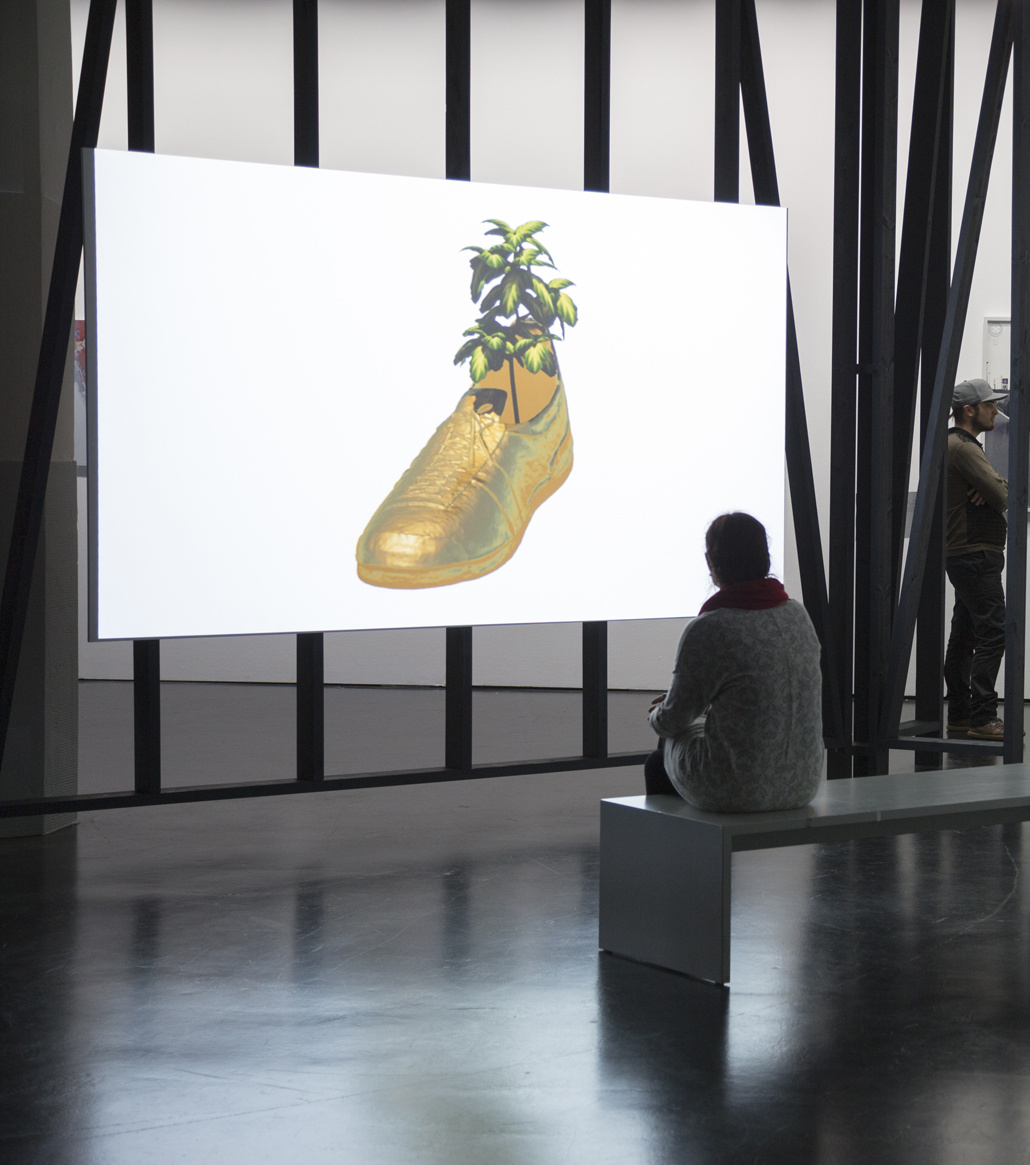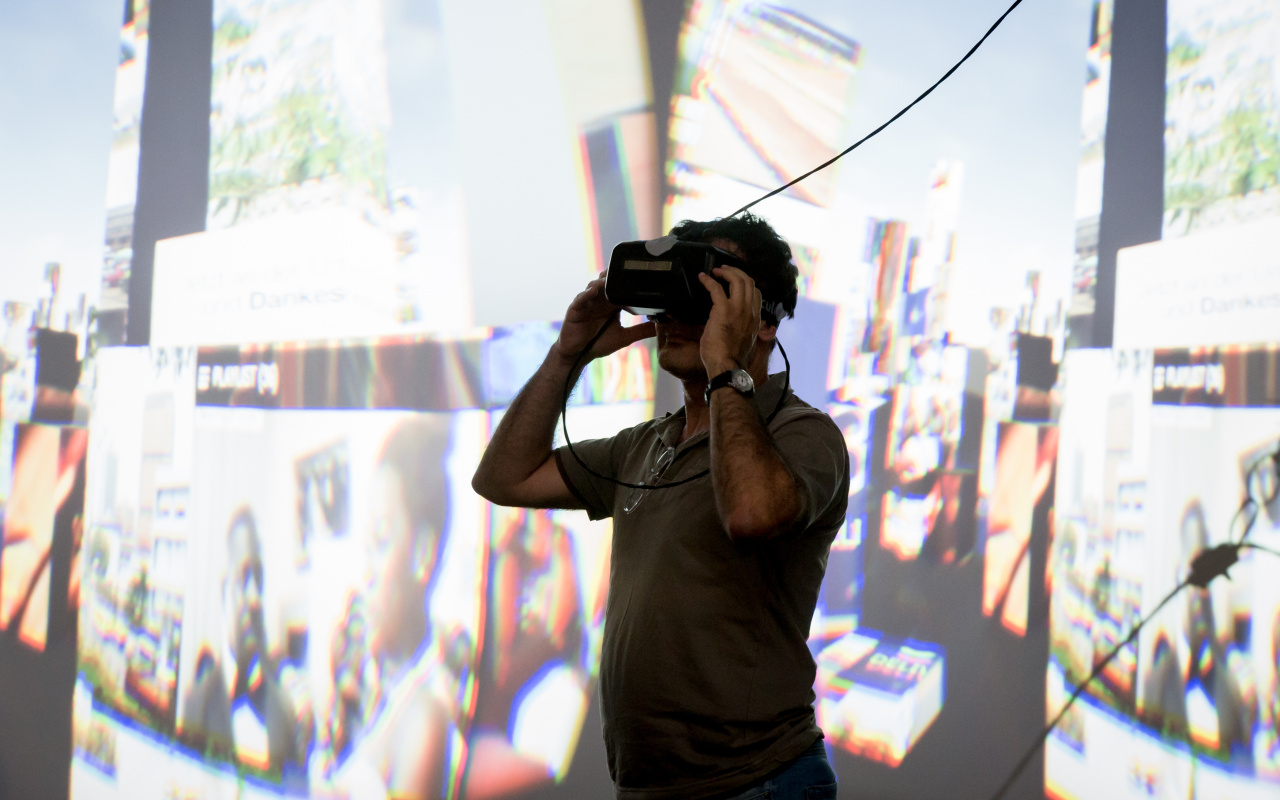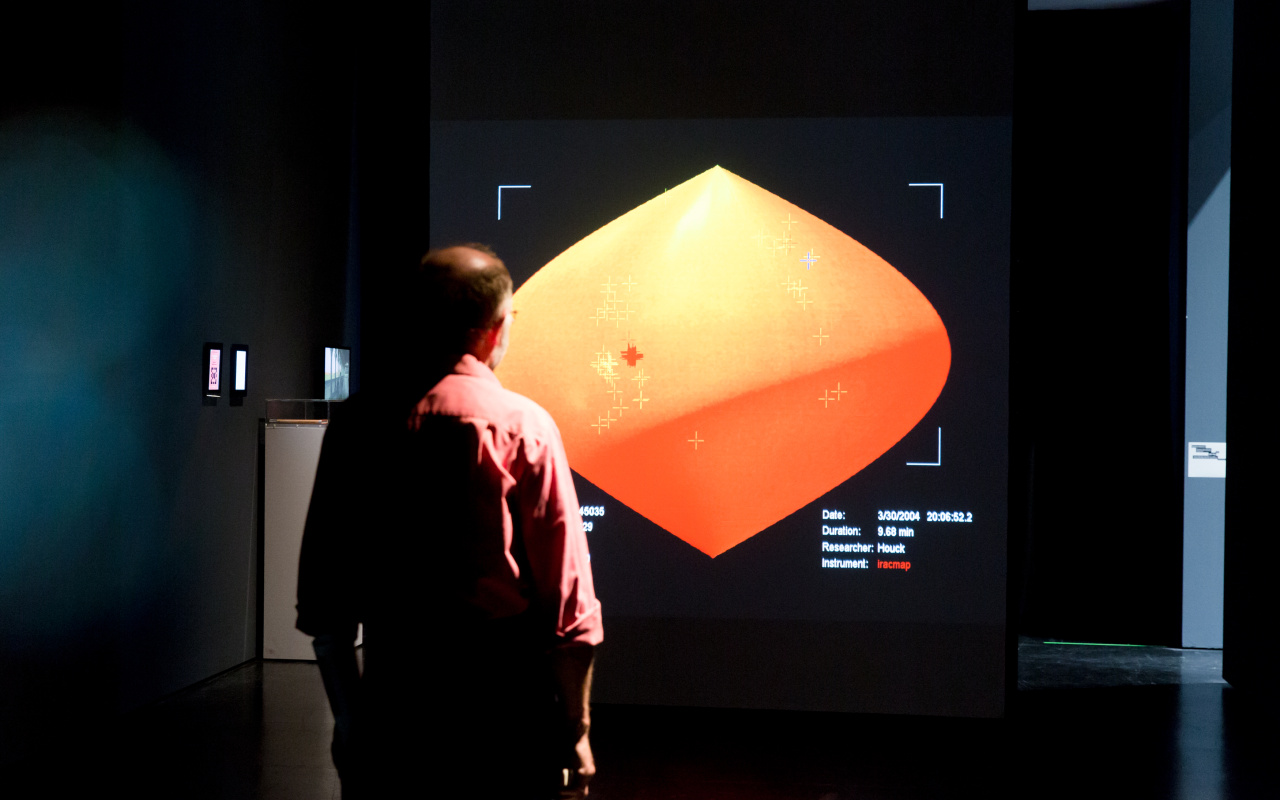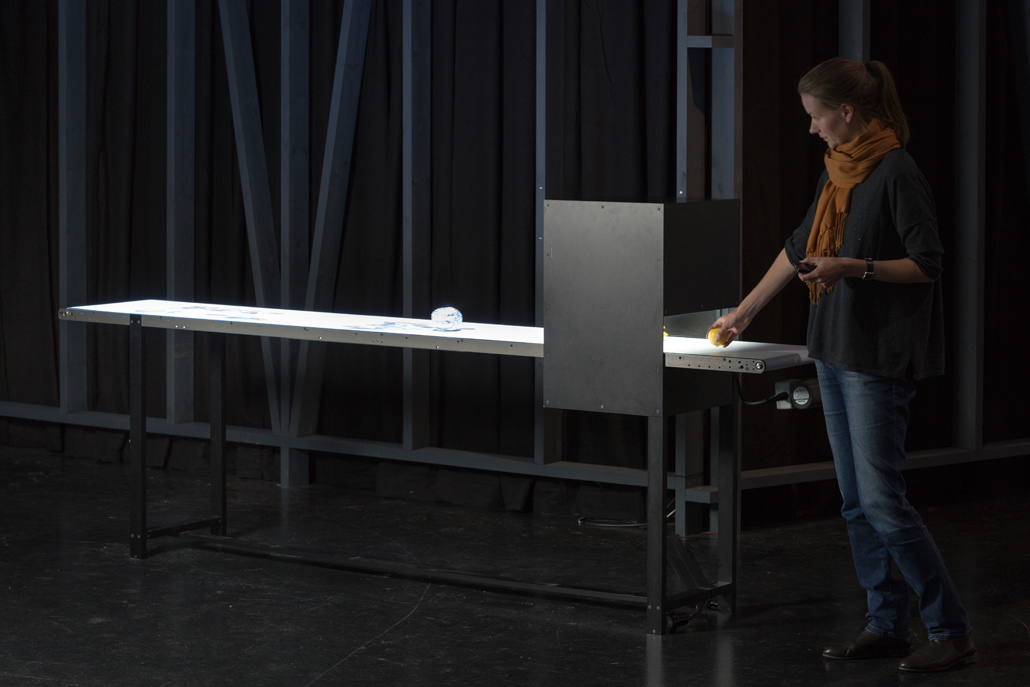Works of the Artists G–L
Infosphere
| G Laurent Grasso: »HAARP« | H Yoon Chung Han, Byeong-Jun Han: »Digiti Sonus« Jonathan Harris: »Data Will Help Us« Mischka Henner: »Scambaiters« Femke Herregraven: »Rogue Waves« Brian House: »Quotidian Record« Scotti Chih-Chieh Huang: »Dandelion Mirror« |
| I Jennifer Lyn Morone™ Inc: »Jennifer Lyn Morone™ Inc« | J Jia: »The Chinese Version« JODI: »Geo Goo« |
| K Matt Kenyon (SWAMP): »Consumer Index« Erik Kessels: »24 HRS of Photos« Jeong Han Kim, Hyun Jean Lee, Jung-Do Kim: »EMC« Brian Knappenberger: »The Internet's Own Boy« | L Oliver Laric: »Versions« Marc Lee: »10.000 Moving Cities – Same but Different« George Legrady: »We Are Stardust« Rafael Lozano-Hemmer: »Please Empty Your Pockets« |
_____________________________________________________________
Laurent Grasso
HAARP (2007)
»HAARP« stands for High Frequency Active Auroral Research Program, a US research program that used radio waves from a facility in Alaska to study the ionosphere in civil and military areas, among other things to investigate the extent to which magnetic storms and disturbances in the upper atmosphere can influence the global radio network, power transmission networks or satellite-controlled navigation systems. The area reconstructed in the animation by Laurent Grasso with array antennas (phased-array short-wave transmitter) recalls Nicola Tesla's visions of the future. Like a radio transmitter, high-frequency waves can be sent into the ionosphere from »HAARP«. The result is a huge virtual mirror that, like an antenna, is capable of sending extremely low frequencies back to Earth. Grasso's interest in the HAARP facility arises from an atmosphere of secrets, fears, rumors and conspiracy theories surrounding the program: »HAARP« is believed to be able to change the world's climate, divert aircraft and missiles, interrupt radio communications and have an impact on human consciousness.
_____________________________________________________________
Yoon Chung Han & Byeong-Jun Han
Digiti Sonus (2012–2014)
»Digiti Sonus« is an interactive audiovisual installation based on sound recording and visualization of the biometric data of a fingerprint. The individual, characteristic lines of the papillary bars on the fingertip of the recipient are represented as sounds and transformed in real time into a musical composition representing the human identity. At the same time, the biometric data of the fingerprint and the sound it generates are visualized in animated 3D images. The installation illustrates complex body patterns and enables the recipients to explore their own identity and compare different fingerprints with their own in sound and appearance. By varying the starting point of the animated fingerprints, the musical notes reorganize and form different sounds that echo in the ears of the audience.
_____________________________________________________________
Jonathan Harris
Data Will Help Us (2013)
In 2013, Jonathan Harris was commissioned by the New York Times to write a manifesto on the potential and dangers of Big Data. The result is a text in vibrant rainbow colours that confronts the recipients with current questions. The essence is always the same: on the one hand, data helps to make our lives easier, but at the same time you direct it in unexpected ways and raise new questions regarding the ethical treatment of them. Technologies are evolving at a rapid pace these days. Harris encourages viewers to pause and asks them to reflect on current developments and changes by asking questions. The manifesto makes it very clear that if technological developments and their effects are not questioned, growth can no longer take place and ethical standards shift. New questions open the door to undreamt-of possibilities and discoveries, and we now have a decision to make as to where this data-based logic will lead us in the future.
_____________________________________________________________
Mishka Henner
Scambaiters (2014)
What happens if you reply to a spam mail instead of deleting it immediately? Behind the unpleasant messages are not only robots that send automated messages, but real people, mostly from Ghana and Nigeria, who invest time and work in spam messages and thus make a living. On the other hand, there are recipients, especially in Europe and North America. Some of them, so-called »scam baiters«, get involved in the game of payment requests, promises of profit and questionable services. In the correspondence a fascinating story of fictional characters develops. The spammers try to convince their addressees of the authenticity of their scenario, while the alleged victims demand evidence. The latter often require elaborately staged photos. Mishka Henner collects and reproduces these partly funny, partly degrading images and messages and thus shows the business of e-mail fraud oscillating between virtuality, fiction, materiality and reality. Finally, there is the realization that at each end of the fiber optic cable there are people whose virtual actions have real effects.
_____________________________________________________________
Femke Herregraven
Rogue Waves (2015)
Femke Herregraven examines the financial markets in the age of abstract transactions and incorporeal trade out of an interest in global finance, data and geopolitics. »Rogue Waves« is a series of aluminum sculptures. Their shapes recall a system of units dating back to ancient means of economic exchange: carved bones and wooden bars. The sculptures reflect the contemporary version of financial transactions between machines. The four aluminum rods allow us to take a look at what is known as »high-frequency trading«: complex programs and algorithms act on the market to achieve returns within microseconds. The four sculptures thus materialize a network of micro-events and imperceptible commercial strategies that are set in motion by software. Despite their insignificance, they are highly influential, which contributes significantly to the changeability, volatility and instability of the stock market.
_____________________________________________________________
Brian House
Quotidian Record (2012)
»Quotidian Record« is based on an auditory implementation of location data collected by the artist over an entire year. The work was released in limited quantities on vinyl. Every single place Brian House visited – from his home to a friend's place of work and home to a foreign city abroad – is associated with harmonious sounds. The eleven-minute piece portrays a year in the artist's life and suggests that even our everyday life can show its own musical qualities. »Quotidian Record« deals with electronic music as well as the aesthetics and materiality of vinyl, thus combining contemporary digital culture with the history of pop culture. It transforms a data flow into a concrete object that can be collected, giving a nostalgic appeal to the narratives of classification and control that determine the data infrastructures of states and corporations. The names of the cities on the vinyl trace the artist's travels and make this object an unusual time capsule closely linked to the year of its creation, while at the same time sketching an alternative portrait of a single person.
_____________________________________________________________
Scottie Chih-Chieh Huang
Dandelion Mirror (2015)
The artist Scottie Chih-Chieh Huang presents the installation of a mirror with a physiological measuring device and contactless sensor technology. The biosensor is able to analyse the facial expression of the viewer and convert it into the form of a dandelion. Accordingly, the mirror not only reflects the image of a person, but also functions as a presentation surface for the interactive installation. Based on a complex fractal and recursive algorithm, the measured data are transformed into a growing virtual plant. The virtual dandelion blossoms through the smiles of the viewers, shrinks when the smile fades and becomes a bud when the viewers do not smile. Smart technology and media art refer to the importance of every smile, virtual patterns underline the symbiosis of data visualization and human reflection.
_____________________________________________________________
Jennifer Lyn Morone™ Inc
Jennifer Lyn Morone™ Inc (2014–2015)
The new digital economy allows companies to make billions in profits from our personal data (virtually from the fact of our sheer biological existence). Trade in personal information, driven by corporations and governments, often happens without our knowledge or intent and is beyond our control. We are no longer in possession of our identity. Jennifer Lyn Morone opposes this by taking the sale of her own data into her own hands: Their proposal consists in »extreme capitalism«, in radical and unconditional individual data sovereignty. Jennifer Lyn Morone™ Inc is a company in which the artist herself is founder, managing director, shareholder and product. The Jennifer Lyn Morone™ Inc caricatures the exploitative logic of conglomerates and grants legal protection and rights to the complete performance of the person Jennifer Morone. The company draws its capital from its past and current resources, the sale of shares on its future potential and from the collection, classification and evaluation of data generated by the artist in her life. Jennifer Morone's personal information is the property of her company.
_____________________________________________________________
Jia
The Chinese Version (2012–2015)
In the 1950s, the Chinese Communist Party decided to simplify the Chinese writing system and thus facilitate communication across class and educational boundaries. Until today, 2/3 of the originally thousands of traditional Chinese characters are not allowed for publication, only about 10% are used in everyday life. Jia addresses this loss of a millennia-old culture in »The Chinese Version«. It mixes the characters so that they no longer make sense as text and can only be recognized as a formalistic structure. On the one hand, it recalls the lost characters and their meanings, which are gradually disappearing from contemporary culture because they are no longer taught and are no longer accessible. At the same time, it exposes the empty meaning of the simplified characters and neutralizes their propagandistic effect.
_____________________________________________________________
JODI
Geo Goo (2014)
Net art pioneers JODI (Joan Heemskerk and Dirk Paesmans) are interested in the dysfunctions of media and human-machine interactions. By cultivating the errors and disturbances of digital media and celebrating their own aesthetics of the faulty, JODI uncovers the functionalities of software, interfaces and media applications: In a rhetoric of alienation they show how something does not work – in this way the actual function becomes conscious through the mistakes. In »Geo Goo» Google Maps is misused. The symbols and icons, which are supposed to contribute to understanding and orientation, become independent on the screen, seem to develop a life of their own and thus undermine any conventions of use, habits and expectations. The map goes under in patterns and a gibberish of signs and code. The icons are deprived of their meaning and meaning and thus make the application Google Maps ad absurdum. »Geo Goo« is a piece of concrete net art that exposes the beauty inherent in error while only showing the surface of the interface.
_____________________________________________________________
Matt Kenyon (SWAMP)
Consumer Index (2008–2015)
»Consumer Index« is a location-based performance in which Matt Kenyon aka SWAMP (Studies of Work Atmosphere and Mass Production) explores the mechanisms of collecting personal data used by data traders and large corporations around the world to create profiles to predict future consumer behavior. For his project Kenyon registered with »Nielsen Families«. Under a false identity, it becomes a data source linked to the property Nielsen uses to measure people as archetypal consumers: Gender, ethnicity, education and socio-economic status. The artist then rebuilt the »Nielsen Homescan«, a barcode scanner, and connected it to a micro video camera. For the performance he implants the modified Homescan into his mouth. The performance thus adds a physical element to the idea of big data streams, literally embodying the concept of consumption and digestion of data. Kenyon then sets out on an impossible task: he wants to scan all products in the global product world – in shopping centers from the USA to New Zealand. Since he infiltrates the process of data collection as a virus – as an impurity of »Nielsen Families«, so to speak – the artist changes both the expectations of data traders regarding his consumer behaviour and his profile and thus becomes less than his actual self. He eludes categorization and becomes an insatiable, unpredictable consumer.
_____________________________________________________________
Erik Kessels
24 HRS of Photos (2012)
Various platforms and communities enable the collective sharing of images on the Internet. Image sharing sites such as Flickr, Pinterest or Imgur and social networks such as Facebook mix private and public images on a daily basis and expose the personal image worlds of their users seemingly unbiased. The art and the prerogative of photography are no longer reserved for professional artists and photographers. Instead, the digital society is privileged to record its life as pixels and feed the picture stories into the World Wide Web to share countless memories with the world. In »24 HRS of Photos«, artist Erik Kessels demonstrates this overwhelming flood of digital images by materializing the wealth of images available on the Internet and thus giving them a physical form. He printed out all 350,000 images uploaded to the Flickr platform within one day, filling the exhibition space. The resulting sea of images visualizes the feeling of drowning in the memories, experiences and impressions of foreign people.
_____________________________________________________________
Jeong Han, Kim Hyun, Jean Lee & Jung-Do Kim
EMC (Emergent Mind of City) III: Karlsruhe, Washington, D.C. and Seoul (2015)
The installation »EMC (Emergent Mind of City) III« is based on real-time data visualization and presents the emotional spirit of three cities: Seoul, Washington D.C. and Karlsruhe. The collective emotional qualia of the three cities are explored by conceptually and visually taking up the growth of trees and nerve cells. By building up an emotional coordinate of the city both diachronically and synchronously, »EMC« aims to clarify the environmental network of Empathy with micro-individual and macro-social emotions. The three cities were selected on the basis of their analogies with historical events and experiences: The layout of Washington D.C. is inspired by 12 European cities, including Karlsruhe. After the Second World War, from 1945 to 1995, Karlsruhe was also the location of an American military base. In Seoul, the Eighth U.S. Army has been stationed in the Yongsan Quarter since 1944. The organic concept of »EMC« shows the diversity of public perspectives in cities that have experienced similar experiences.
_____________________________________________________________
Brian Knappenberger
The Internet’s Own Boy: The Story of Aaron Swartz (2014)
The documentary »The Internet's Own Boy: The Story of Aaron Swartz« gives an insight into the life of programmer, author and Internet activist Aaron Swartz (*1986). Swartz fought for free access to knowledge and against censorship and was regarded by technology circles in the USA as a kind of prodigy. As a 14-year-old, the hacker was involved in the development of the RSS web standard. In the further course of his career he worked on the technical implementation of the Creative Commons licenses and helped build the Reddit platform. In 2011, Swartz broke into the online database JSTOR, which contains scientific articles that can only be read against payment. He was charged with illegally downloading 4.8 million articles. The film shows interviews with family members and friends as well as with luminaries from the technology and internet scene with whom Swartz has worked. The story ends with Swartz's suicide in the context of the legal dispute with JSTOR in 2013, when Swartz turned 26. The film is freely available on the Internet under CC license.
_____________________________________________________________
Oliver Laric
Versions (2010)
»Versions« is an ongoing project by Oliver Laric, which deals with historical and contemporary ideas on picture hierarchies. In Versions, the artist emphasizes the cultural consequences of the reproduction and manipulation of images, which lead to a constant spread of new, remixed contents and meanings. Traversing different epochs, Laric underlines the historical origin of the copying process, whose roots lie in the traditions of ancient Greece and Rome: as soon as a first representation has been created, the distribution of their copy is already possible. Each copy adds different information to itself and creates something new that is different from the original. This process, which has been observed in popular culture for a long time and was increasingly used by the film industry in particular during the 20th century, is now increasingly emphasized by image manipulation with the aid of image processing software, by adjustments and by the remix of images: Our perception of reality is significantly influenced by the circulation of contemporary online images. In the age of digital reproduction, the hierarchical separation between original and copy dissolves: Many versions coexist simultaneously. Despite the simple wear and tear and the lack of the special aura of an original, these versions still take an active part in the production of knowledge, whereby a multitude of different authors contribute to the hybridization of style and aesthetics, resulting in changed information and forms.
_____________________________________________________________
Marc Lee
10.000 Moving Cities – Same but Different (2015)
In his installation »10.000 Moving Cities« Marc Lee deals with the world of information exchange, user-oriented content and news about places, people and events. Visitors can select any place in the world using a digital interface. The latest text, image, video and sound information is searched for on the Internet in real time and then processed both visually and audio technically. Every new inquiry creates new perspectives and images of the real world as an interactive interaction of visitors and the digital infosphere. The audiovisual information comes from social networks - i.e. it is not produced by a specific organisation, company or artist, but by the public (user-generated content). This almost inexhaustible source feeds the infosphere from which »10,000 Moving Cities« generates countless cross-sections and lets us look through a window into the world's data streams.
_____________________________________________________________
George Legrady
We Are Stardust (2008)
»We Are Stardust« is a double screen projection with an infrared camera. The installation traces a sequence of observations in the sky as made by NASA's Spitzer space telescope during its cold mission from 2003 to 2009. Spitzer is a solar satellite in an orbit following the Earth's orbit. The satellite has three infrared detectors for measuring heat-based information in space. The installation consists of two projections at opposite ends of the exhibition space, visually tracing the chronological sequence of Spitzer's scientific observations. A projection shows the sequence of about 46,000 observations made when scientists looked out into space. The full sequence extends in cycles of one thousand observations on a map of the universe over a total of eight hours. The second projection shows the exhibition space through an infrared camera on a military technological level. It is placed above the heads of the visitors, and their point of view is determined by the chronological sequence of the Spitzer observations. Since it is located directly in the exhibition space, it thermovisually records the presence and behavior of visitors.
_____________________________________________________________
Rafael Lozano-Hemmer
Please Empty Your Pockets (2010)
Mexican-Canadian media artist Rafael Lozano-Hemmer is known for his interactive installations, which cover both urban public space (as in the Relational Architecture series) and the gallery space and use a wide range of new media and technologies (including sensors, biometric scanners, surveillance cameras, tracking systems and microphones). The installation »Please Empty Your Pockets« consists of a computer-controlled scanner and a treadmill. Everyone who places a small object on the assembly line contributes to the creation of a new interactive work of art. The structure of the installation is reminiscent of a baggage scanner at the airport, with the only difference that the participation of civilians is voluntary. At the other end of the treadmill, a scanned image of the item appears along with images previously scanned and images from a database containing 600,000 items scanned since the installation was first installed. Supported by augmented reality technology, the installation combines real objects with their traces and thus functions as a collective memory of the objects consumed.

